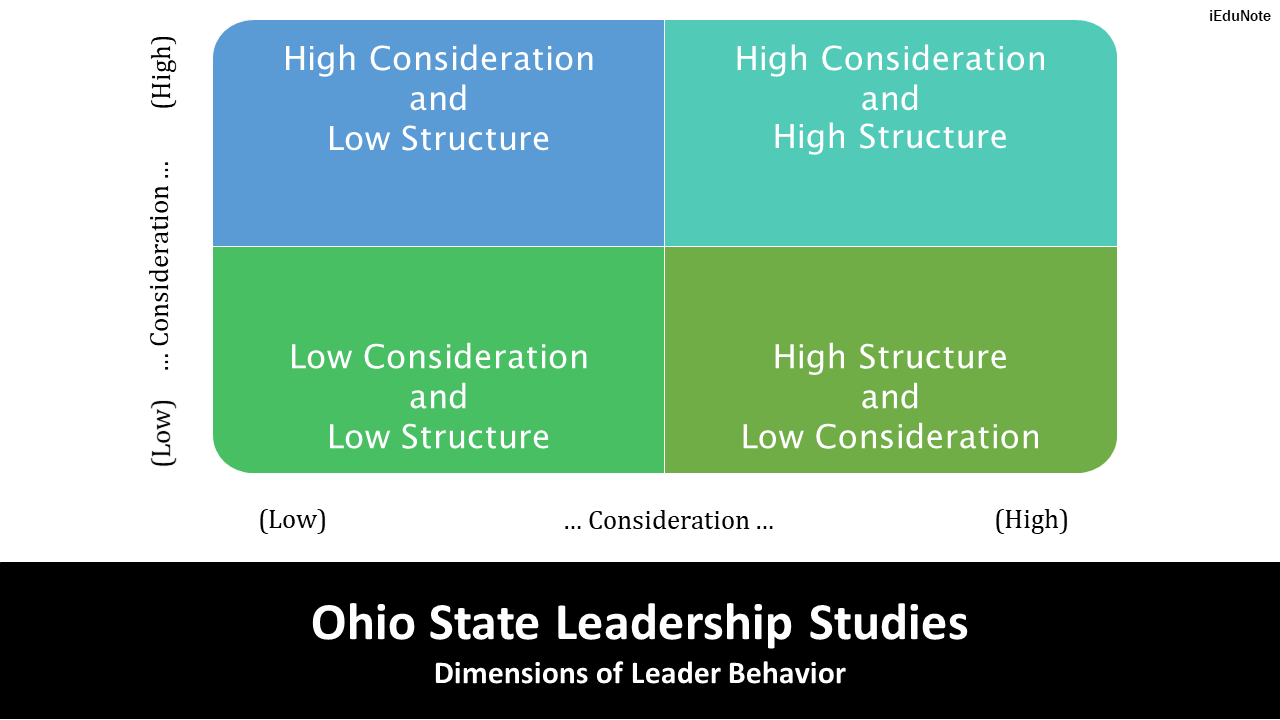Uncover Ohio State Leadership Studies’ key behaviors: Initiating Structure and Consideration. Learn effective leadership techniques.
What is Ohio State Leadership?
Ohio State Leadership Studies is Behavioral Leadership Theory. Ohio State University did a series of studies on leadership in 1945 to identify observable behaviors of leaders instead of focusing on their traits.
Ohio State Leadership Studies states leaders exhibit two types of behaviors, Initiating Structure and Consideration in managing employees to achieve goals.
They found two critical leadership characteristics, either high or low or independent of one another.
The research was based on questionnaires to leaders and subordinates of the organizations.
These are known as the Leader Behavior Description Questionnaire (LDBQ) and the Supervisor Behavior Description Questionnaire (SBDQ).
Ultimately, Ohio state leadership studies narrowed the description of leader behavior into two dimensions; initiating structure behavior and consideration behavior.
Initiating Structure Behavior
The behavior of leaders who define the leader-subordinate role so that everyone knows what is expected establishes formal communication lines and determines how tasks will be performed.
Consideration Behavior
The behavior of leaders who are concerned for subordinates and attempt to establish a warm, friendly, and supportive climate.
Ohio State Leadership Grid
The Ohio State Leadership Studies also showed that initiating structure and consideration are two distinct dimensions and not mutually exclusive.
A low score on one does not require a high score.
Hence, leadership behavior can be plotted on two separate axes rather than on a single continuum, as shown in the following diagram;

The 4 quadrants in the above figure show various initiating structures and consideration considerations.
In each quadrant, there is a relative mixture of initiating structure and consideration, and a manager can adopt any one style.
Although an early study, this is still often referenced.
Notably, the two factors correlate with the people task division in other studies and preferences.
The findings of Ohio State Leadership Studies suggest that effective leaders possess a strong ability to work with others and build a cohesive team balanced with the capability to create a structure within which activities can be accomplished.